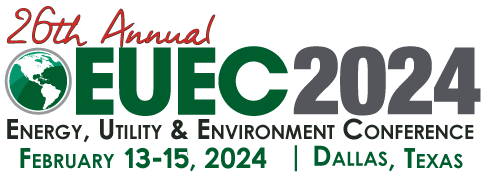I2.1 | Energy Management: Barriers to Implementation
Michael Walker | VP – Energy & Environmental Services, The EI Group, Inc.
There is a lot of talk about saving energy and improving sustainability. While everyone agrees that “we” should do more, many owners and property managers have concluded that their reasons for not implementing energy saving improvements are valid. Yet, many of these reasons can be boiled down into some common themes. This paper presents six reasons (some good, some not so good) energy improvement projects get derailed or don’t get any traction. In each case, strategies that may assist employee efforts to get energy savings projects back on track are presented.
I2.2 | Risk Management for Sustainable Projects
Timothy Corbett | President, SmartRisk
The interest along with the legal and regulatory requirements for sustainable design is gaining momentum dramatically in the industry today. With these changes comes increased risk and liability for design and building professionals and project owners. Sustainable design incorporates concepts using innovative products, energy efficient materials and new construction methods. This session will cover areas of concern, increased risk including industry claims that have occurred for sustainable projects. Sustainable risk based decision making along with risk management strategies will be discussed to help improve the successful outcome for sustainable projects.
I2.3 | New Options for Corporate Renewable Energy Programs
Peter Freed | Project Developer, TerraPass
For many companies, developing a renewable energy project means putting solar panels on the roof or buying RECs. More options are available for corporate renewable energy programs. TerraPass is working with corporations around the country to develop dedicated, off-site renewable energy projects. Such initiatives present unique opportunities for creating a long-term supply of fixed price, green power or gas. In this presentation, I will explore a variety of ways companies can identify and develop off-site renewable energy projects, how such arrangements can be structured, possible benefits to the companies and project owners and the challenges of such an approach.
I2.4 | Sustainability is Dead
Greg Scandrett | VP of Product Management, Enviance, Inc.
The basic idea of sustainability is to continue to act in the same way we always have and minimize the impact of our actions. This is the lazy route. This is the path devoid of innovation and real problem solving because it doesn’t require real change; it only requires us to do the best with what we have. Few businesses today would consider an investment in a sustainability project on par with an operational or R&D project, after all businesses make goods and services, sustainability is something we have to do. That is the main problem with the sustainability paradigm. In this presentation, Greg Scandrett, VP of Product Management will discuss with attendees why sustainability in the present form must change. Attendees will learn why it is counter productive to install sustainability initiatives that after the fact – after the product has been designed, after the business process has been created, after the raw materials have been procured, after the product has been manufactured. Sustainability decisions must be placed into the process and not managed ‘at the end of the pipe’. Greg will argue that sustainability must endure the same transformation process as quality did in the 20th century.
I2.5 | Building Information Modeling and Sustainability for Healthcare Design and Construction
Allan Chasey | Professor, Arizona State University
The US healthcare industry is a dynamically changing market, characterized by shortened design time, decreasing construction budgets, aggressive construction schedules and demanding requirements while maintaining sustainability goals. The increasing complexity of hospitals and the growing recognition of sustainability needs are major challenges for healthcare owners. To accomplish multifaceted healthcare construction with its shortened schedules, reduced cost, and sustainable objectives, a collaborative, Integrated Project Design (IPD) team approach and Building Information Modeling (BIM) are needed. The use of sustainability guidelines and BIM are critical in achieving the comprehensive approach necessary for constructing highly technical healthcare facilities. The case study of the Phoenix Children’s Hospital’s (PCH) new 750,000 SF healthcare and administration facilities will provide insights into the process of integrating sustainability and BIM. Specifically, this presentation will: 1) Identify the Green Guide for Healthcare (GGHC) credits earmarked as attainable. 2) Analyze the BIM usage through the Construction Manager/General Contractor process. 3) Identify how BIM tools were used within the construction cycle to promote the PCH sustainability mission. 4) Provide suggestions to improve the use of BIM for future sustainable healthcare projects. The complexity and integrated approach highlights how BIM can be used to support sustainability efforts for future healthcare projects.
I2.6 | Collaboration-Based Management of Petroleum Pipeline Rights of way in Nigeria
Unite Ekwo | Phd Resercher, Newcastle University
The paper starts with a conceptual exploration of the challenges in the management of Petroleum Pipeline Rights of Way within the context of public infrastructure maintenance. Upon this, it developed a holistic understanding of the concept and global challenges of petroleum pipeline rights of way management. It argues the need for Collaboration-Based Management of the Rights of Way of Petroleum Pipeline, in particular, to involve the communities traversed by the pipelines as a stakeholder to enhance social, economic and environmental sustainability in a balanced manner in their interaction with the other stakeholders, viz; the government and the multi-national oil companies. By applying the framework, the route taken by the pipeline in the Federal Capital Territory, Abuja is demarcated; and further analysis found that there is widespread encroachment on it by residential developments and other land uses. By analysing this and other data from secondary sources, it was found that the pipeline has not improved the economic situation of the people in the communities it traversed. On the contrary, it has transformed the otherwise tranquil communities into disorderliness, attracted violent crime and caused a plethora of environment problems, exposing the people to challenges which are unimaginable if the pipeline project were not executed.

